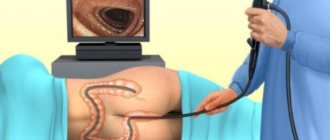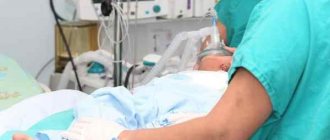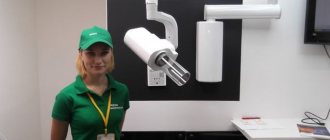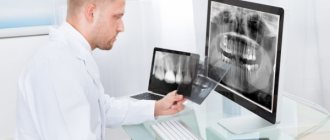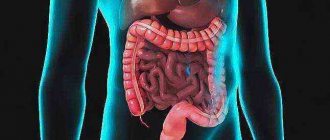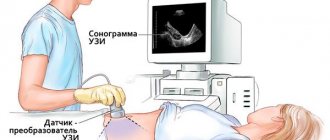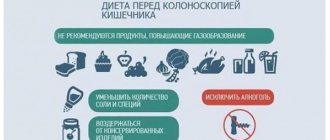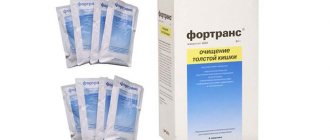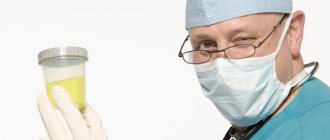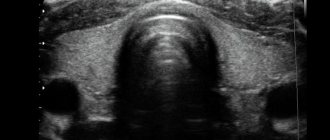The slag-free diet is followed for a short time, so it has no contraindications. It is based on avoiding coarse fibrous foods. The menu consists of easily digestible foods that are quickly digested.
The following should be excluded from the diet:
- fatty meat and fish
- potatoes, pasta, pearl barley
- peas, beans
- sweet confectionery
- black bread
- chocolate, nuts, coffee, strong tea
- whole milk products
- carbonated and alcoholic drinks, kvass, saturated juice
- seasonings and spices
Recommended: lean meats and fish, vegetable broths, low-fat fermented milk products, clear juice, green and herbal tea. Meat and fish should be boiled or steamed.
What is sigmoidoscopy
The sigmoidoscopy procedure is prescribed for those who complain to the proctologist about problems with the gastrointestinal tract. During the manipulation, the doctor can examine the rectum and, partially, the sigmoid colon, determine the presence of deviations from the norm and select treatment based on the information received.
For inspection, a special device is used - a sigmoidoscope, equipped with high-precision eyepieces, with which you can see even very small tumors and obtain their particles for analysis. This increases the likelihood of detecting cancer at an early stage and starting therapy in a timely manner.
Doctors advise every person over the age of 40 to undergo RMS for preventive purposes.
The procedure is needed to assess the condition of the intestinal walls and identify deviations from the norm. During the study, the following parameters are assessed:
- color and tone of the intestinal walls;
- characteristics of the submucosa;
- relief;
- elasticity of blood vessels;
- the presence of neoplasms, polyps or damage to the mucous membrane in the form of ulcers, cracks or erosions.
A specialist can easily determine inflammation and its cause, and learn about the health of the intestines. However, he will be able to do this only if the pathology is localized no further than 35 cm from the anus.
During the examination, the doctor has the opportunity to:
- taking tissue for biopsy to more accurately identify the nature of the detected pathology;
- excision of polyps;
- cauterization of the tumor;
- stopping bleeding;
- widening the canal if it is too narrow.
The proctologist must tell the patient in detail about the preparation rules and procedure in advance.
Diet adjustments per week
The patient should adjust his diet about a week before the study, switch to eating wheat, buckwheat porridge, and broths. It is better not to eat rice porridge, as it causes the accumulation of feces in the intestines. If sigmoidoscopy is scheduled for the morning, then the night before you can only drink tea.
Immediately before the procedure (in the morning) eating is prohibited. If the doctor finds that the patient has not prepared sufficiently for the procedure, he may cancel the study or reschedule it for another time.
The patient should give preference to such products as:
- Broths, lean soups.
- Ice cream, jelly.
- Juices (without pulp).
- Homemade mayonnaise, vegetable oils.
- Fermented milk, dairy products.
The preparation stage for sigmoidoscopy also includes taking an anamnesis. The specialist asks the patient in advance about cases of allergies, the use of medications, and the facts of recent studies of the gastrointestinal tract.
It should be noted that many patients refuse such an examination of the rectum. This is due, first of all, to the fact that the sigmoidoscope is inserted into the rectum through the anus.
Patients should not be embarrassed; sigmoidoscopy is an absolutely normal type of examination, performed by a specialist repeatedly. During the study, it is possible that fecal matter is released, which occurs along the movement of the apparatus. To ensure that feces in the rectal cavity do not interfere with the advancement of the sigmoidoscope tube, it is treated with means specifically designed for this purpose. In addition, the patient is given an enema on the day of the study, which allows the intestines to be cleansed as thoroughly as possible.
It should be borne in mind that giving yourself an enema yourself is undesirable, as it can lead to injury to the intestinal cavity.
In addition, the patient is recommended to agree with one of his relatives to be picked up from the medical facility after the study. This is due to the fact that doctors prohibit driving vehicles within 12 hours after sigmoidoscopy, as the patient will experience a feeling of discomfort. Drinking alcohol is also prohibited for 24 hours after the procedure. On the eve of the study, you should also avoid alcoholic beverages, as they have a detrimental effect on the procedure and can cause complications.
How to prepare for sigmoidoscopy
The essence of preparatory activities is to perform actions that help make the intestines clean. Preparing for bowel rectoscopy involves two important steps.
- In the two days preceding the planned procedure, a slag-free diet begins.
- Immediately before the appointed date - cleanse the intestines.
There is no need to perform any other special actions.
What you can and cannot eat before sigmoidoscopy
A diet preceding sigmoidoscopy is required to minimize the formation of intestinal contents. It is called “slag-free” because it involves eating foods that produce little feces and gases. You should eat this way for two days before your scheduled RRS.
The following diet is recommended for the patient:
- light broths;
- semolina;
- eggs;
- lean meat or fish, steamed or boiled;
- cheese;
- fermented milk products (but not cottage cheese).
While preparing for the examination, you must avoid:
- greenery;
- a large number of vegetables;
- berries;
- fruit;
- baked goods and bread;
- pearl barley, oatmeal and millet porridge.
On the eve of sigmoidoscopy, it is recommended to have a light lunch and eat exclusively liquid meals for dinner. The last meal is allowed no later than 18:00.
Directly on the day of the scheduled examination, if it was done in the first half of the day, it is better to drink sweet tea for breakfast and show up in the morning on an empty stomach.
If RRS is scheduled for the second half of the day, then you can have breakfast, but the meals must be liquid.
Is it possible to drink water before sigmoidoscopy?
Not only is it possible to drink water, but it is also necessary. The consumption of clear broths, weak tea and coffee without milk, compotes without berries, and non-carbonated drinks is also allowed.
Preparation rules
First of all, it should be noted that it is possible to obtain a high-quality image of the rectum during the study only if this organ is freed in advance. A preliminary (3-5 days before the study) transition to a toxin-free diet can prevent the accumulation of waste in the rectum. It is based on products that are not enriched with dietary fiber. Eating with them leads to the production of feces, which interfere with the research procedure.
Methods of colon cleansing
There are two ways to cleanse the intestines - an enema or the use of laxatives. It is better to consult your doctor which of these options is preferable.
Fortrans
Fortrans is a rather delicate product that gently cleanses the intestines without disturbing its natural microflora and without getting into the blood. It comes out completely with the stool.
Fortrans does not allow liquid to be quickly absorbed; it remains in the intestines, liquefying feces and fecal stones that have accumulated for a long time.
It is very important to use the product correctly, based on how long the sigmoidoscopy is scheduled for.
- RRS in the morning. Fortrans begins to be used the day before from 17:00 to 21:00. The recommended interval is one hour between each serving. Usually, already two hours after the first, the patient will want to go to the toilet. This desire will appear more than once within four hours after the last portion.
- RRS after lunch. The night before, drink two sachets of the product, and take the rest in the morning. After Fortrans, within half an hour I feel an unbearable desire to go to the toilet.
Loose stools may be observed for another 2-3 days after using Fortrans.
Fleet Phospho-soda
The use of this remedy should also be guided by the expected time of the procedure.
- In the first half of the day or in the afternoon (under anesthesia), the day before:
- 7:00 – breakfast is replaced with one glass of liquid – water or broth, fruit juice, tea or coffee;
- after breakfast - the first dose - dissolve 1 bottle of Flit (45 ml) in 120 ml of cold water. The resulting solution is drunk with a glass of cold water;
- 13:00 – lunch is replaced with three glasses of light liquid;
- 19:00 – 1 glass of light liquid instead of dinner;
- after dinner - the second dose (prepared in the same way);
- liquids can be consumed in unlimited quantities until midnight.
- In the afternoon without general anesthesia, the day before:
- 13:00 – light snack (small piece of meat or poultry). After this, no solid food;
- 19:00 – replace dinner with one glass of light liquid;
- after dinner - first dose;
- per evening - at least three glasses of liquid.
On the day of the procedure, the admission rules are as follows:
- 7:00 – 1 glass of light liquid instead of breakfast;
- second dose;
- until 8:00 you can drink light drinks.
As a rule, Fleet causes stool within half an hour, but no later than six hours after administration.
Lavacol
When prescribing a drug such as Lavacol, the doctor must give the patient clear instructions on how to use it correctly. The drug intake is completed depending on the time of examination.
In any case, you should drink no more than 250 ml of Lavacol at a time. This must be repeated every 20 minutes until the entire dose has been taken.
Duphalac
One of the most gentle and effective means for cleansing the intestines. Before RRS, you should drink it the day before - 2 hours after lunch is eaten. 200 ml of Duphalac is diluted with water (2 l). The resulting solution should be consumed within 2-3 hours.
After about 3 hours, bowel emptying will begin.
Microlax
Usually two or three microenemas are needed. The first two of them are placed the evening before the procedure with an interval of about an hour. The latter remains directly on the day of the RRS. It is used three hours before the start of the procedure.
To place Microlax, it is recommended to lie on your side with your knees pulled up to your stomach, or stand on all fours. Then the package is opened and lightly pressed on the tube until drops of the drug appear. The tip of the enema is lubricated and inserted into the anus along the entire length of the tip (for children under three years old - half). The bottle is squeezed until all its contents enter the intestine, then removed. Usually defecation occurs within a quarter of an hour.
Preparation with an enema
An enema is a classic colon cleansing method. Many people consider it not the most pleasant, but it is quite effective.
In the evening, before sigmoidoscopy, you will need to give one or two enemas (the recommended interval between them is at least an hour). Immediately two to three hours before the scheduled procedure, another enema is given.
The manipulation is carried out using warm boiled water (1.5-2 liters at a time). It should be drinkable, not dirty, as it partially enters the bloodstream.
The most suitable temperature of the liquid for an enema is 37-38 degrees. Colder temperatures can provoke not entirely pleasant sensations and pain and increase peristalsis, while hotter than 40 degrees is dangerous.
For the enema you need:
- an Esmarch mug with a volume of 1.5-2 liters - most often a rubber reservoir for prepared liquid;
- rubber hose – 1.5 m long, 10 mm in diameter;
- plastic tip;
- a special tap on the hose or a clamp if it is missing.
When everything for the enema is prepared (water, Esmarch's mug, cleaned tip), you can begin the manipulation. The algorithm is as follows.
- Clamp the hose of the mug and fill it with the prepared liquid.
- Raise Esmarch's mug at arm's length and release some water (this will remove unnecessary air and fill the hose with water).
- Lubricate the tip with vegetable oil or Vaseline.
- Take a comfortable position.
- Now you can insert the tip into the anus. The first 3-4 cm must be inserted, directing it towards the groin, then 5-8 cm - parallel to the tailbone. If there is an obstacle during the insertion process, the tip is removed 1-2 cm and left in this position.
- Raise Esmarch's mug a meter and a half, open the tap or remove the clamp. Water will begin to flow out.
When the water reaches the intestines, the patient will immediately feel that his stomach is full and will want to go to the toilet. If you can’t stand it, then you should stop the water and massage your stomach in a circle. When the urge to defecate subsides, you can continue filling the intestines with fluid. Stop pouring water when a small amount remains at the bottom. This is necessary to prevent air from entering the intestines.
When the liquid is introduced, the tap is closed and the tip is pulled out. The anus should be covered with a clean cloth and it is advisable to walk around the room a little. If you feel the urge to defecate, you should immediately go to the toilet and allow the stool to pass out along with the water.
Contraindications
Sigmoidoscopy is considered a simple and painless procedure. It has practically no contraindications, but sometimes it is recommended to postpone the diagnosis for a certain period. After the patient’s condition improves and certain therapeutic measures are carried out, a definitive diagnosis is made.
The examination is postponed if:
Blood from the anus
- acute anal fissures;
- massive blood loss;
- acute inflammatory processes in the peritoneum (for example, peritonitis);
- acute paraproctitis;
- pulmonary and heart failure;
- mental disorders;
- general severe conditions.
Rectaromanoscopy is tolerated during menstruation. In all cases, the decision to conduct diagnostic studies is made by the treating coloproctologist.
